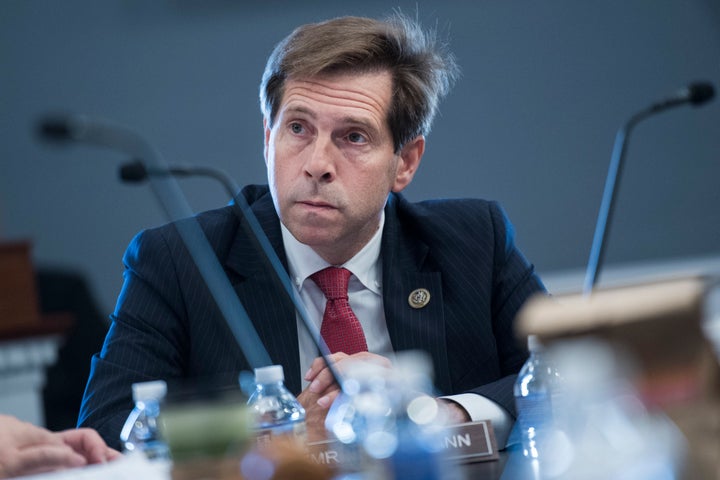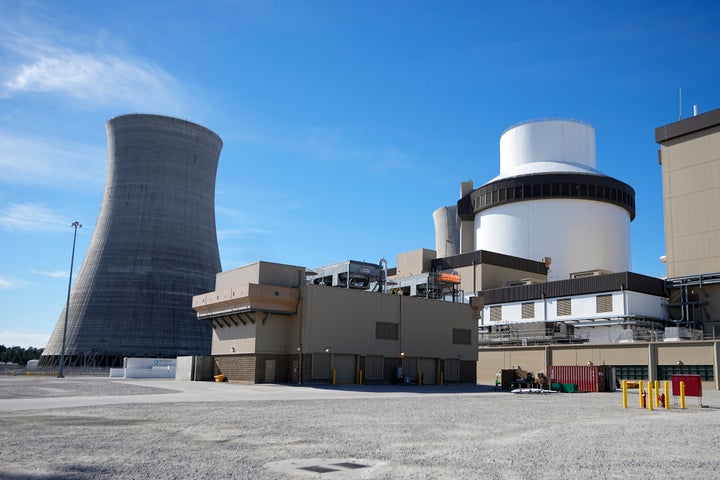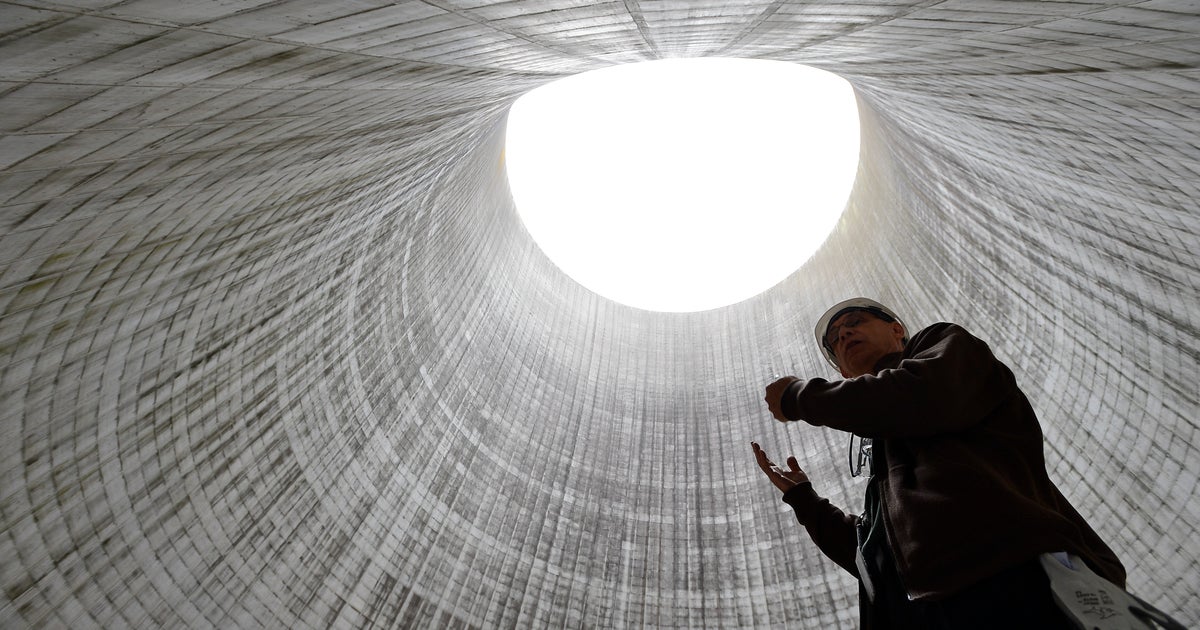The Biden administration wants the United States to triple the global supply of nuclear power, with American-designed reactors running on fuel enriched in the West. The goal: Usurp Russia’s near monopoly on atomic energy exports, and keep China from gaining control of yet another green energy industry.
But there’s one big problem: The U.S. isn’t even building any more reactors at home.
After nearly 15 years of billion-dollar cost overruns and delays, the utility giant Southern Company just hooked the second of two new reactors at a power plant in Georgia up to the grid this week — the only two atomic energy units built from scratch in the U.S. in decades. Developers are shopping around all kinds of novel designs for new-age nuclear plants. Yet few utilities can afford — or persuade investors to put up the cash for — projects that can take a decade or more to complete.
Luckily for President Joe Biden, the federal government owns a massive power utility specifically designed to deploy large-scale infrastructure that remains out of reach for the market’s invisible hand. But building new megaprojects means borrowing money — and Congress hasn’t bothered to adjust the utility’s credit limit for inflation in 45 years.
Established almost exactly 91 years ago to electrify rural parts of the American South too poor to attract profiteering utilities, the Tennessee Valley Authority today generates and sells power to 153 local distributors that serve 10 million people in Tennessee and the surrounding region. The TVA’s seven reactors, spread out between three nuclear power plants, churned out 43% of its electricity in the past few months.
The TVA functions like any other independent power company. But the New Deal-era state corporation’s board of directors is appointed by the White House and its shares are owned by the federal government. That makes the TVA the closest thing the U.S. has to the kind of government-controlled entity that other countries have tasked with completing their own years-long nuclear megaprojects.
France, Japan, South Korea, the United Arab Emirates, Poland and Ukraine all use government ownership to build and operate nuclear energy plants. The Kremlin-owned Rosatom has only widened Russia’s lead over the U.S. in reactor and uranium fuel exports in recent years, while successfully deploying new technologies at home. China’s state utilities have built reactors at home faster than any other country, and the country now looks poised to begin exporting its reactor designs in direct competition with the U.S.
Putting the TVA at the cutting edge of the U.S. government’s nuclear revival strategy is not a new idea. But it’s gaining momentum. The utility is already working on two next-generation projects to build some of the country’s first small modular reactors. Now even the regulator who oversaw construction of the nation’s only all-new reactors in Georgia is encouraging the TVA to take up the challenge of constructing more.
On a call with reporters Tuesday, TVA chief executive Jeff Lyash reversed his past opposition to building more of the large reactors that just came online in Georgia, saying he would no longer rule it out.
But the TVA’s atomic ambitions are hurtling toward a major roadblock.
In the 1970s, the TVA started work on 17 nuclear reactors to meet growing electricity needs. But it ended up constructing just seven, as increasingly efficient electric technology and the growth of fossil fuels kept demand flat, despite a rising U.S. population. Faced with soaring debt from unfinished projects that would never earn money, Congress set the utility’s debt limit at $30 billion.
If Congress had set that budget to automatically rise to account for inflation, that same dollar value would now surpass $137 billion. And with demand now surging from data centers and as the world races to replace fossil fuels with electricity, two-thirds of the TVA’s credit line is used up.
Since its debt levels reached $24 billion at the end of 2016, the TVA has steadily shaved billions off its negative balance sheets, in part with contracts that direct revenues directly to paying down debt, John Thomas, the TVA’s chief financial officer, said on the call.
He insisted the debt “doesn’t inhibit our ability” to get started on more projects, such as a proposal to build two or more BWRX-300 nuclear reactors — newer, smaller generators designed by North Carolina-based GE Hitachi Nuclear Energy — in Tennessee.
Due to its federal ownership, the TVA is legally barred from receiving money from certain government funds, like those from the Department of Energy’s Loan Programs Office. But the TVA can even benefit from huge new subsidies in Biden’s landmark climate-spending law, the Inflation Reduction Act. The law specifically included language to allow the TVA to receive direct cash payments from the government to help fund new clean energy investments.
There is more money on the way. Rep. Chuck Fleischmann (R-Tenn.), who heads the energy and water subcommittee on the House committee that handles the federal budget, included a nearly $900 million line item, through which the TVA could request cash to build the three small nuclear reactors.
But Fleischmann said once the project begins, “there would be a potential” scenario where Congress would “have to actually look at the possibility of raising” the TVA’s debt limit.
“I think we need to do everything possible” to facilitate the TVA’s nuclear buildout plans, Fleischmann told HuffPost. “I would certainly be willing to look at that possibility.”

Tom Williams via Getty Images
At $35 billion, the two new Westinghouse AP-1000 reactors at Southern Company’s Plant Vogtle project comprise the most expensive power plant ever built in the U.S., and experts believe those reactors are still the cheapest possible projects for large-scale capability.
But even optimistic cost projections would test the limits of TVA’s budget, particularly if the utility goes forward with building both the nation’s third-ever AP-1000 and multiple BWRX-300s. And on top of these nuclear investments, the TVA is still building out new gas-burning generators at roughly double the rate needed to make up for retiring coal plants.
On its quarterly earnings call Tuesday, the TVA’s top executives highlighted its two small modular reactor projects as technological innovations that could fill the need gas is currently serving.
While the nuclear plants the TVA is now considering use traditional water-cooling technology, the TVA is also working with the California-based startup Kairos Power on a pilot project in Oak Ridge, Tennessee, to demonstrate a next-generation reactor that runs on a special kind of fuel and uses fluoride salt instead of water as a coolant, allowing it to more easily rev up and down to match demand. The test reactor got the green light from the Nuclear Regulatory Commission in December.
“Advanced nuclear in particular holds a great deal of promise as a dispatchable, carbon-free technology,” Lyash said.
Once a few projects get going and the supply chain kicks into gear, GE Hitachi estimates that the cost of the smaller BWRX-300 reactors would compare favorably to other energy sources. At $60 per megawatt hour, the reactor would produce electricity more cheaply than many wind and solar sites and could provide back-up to the grid for roughly half the price of a gas-powered backup generator, according to widely-cited data from the consultancy Lazard.
But if cost overruns prevent the TVA from actually building more than one BWRX-300 at its new Tennessee plant, there’s no guarantee that they’d see the same cost savings. And their impact on the grid would be less than a large-scale nuclear plant, since each small modular reactor produces at most 300 megawatts of energy.
Each AP-1000, meanwhile, packs 1,114 megawatts of power, enough to supply steady electricity to nearly 1 million homes. That scale may make them make more financial sense, even if the first two that were built more expensive up-front to build, now that the U.S. has at least a few functional AP-1000s.

Not everyone agrees that TVA should prioritize more nuclear projects. With nearly half the TVA’s electricity already coming from nuclear reactors, the Southern Alliance for Clean Energy said the utility should look to build wind turbines, solar panels and batteries — all of which are increasingly cheap but still make up a tiny fraction of the TVA’s overall generating system.
“I’m not convinced we need to be building more nuclear plants at TVA,” said Stephen Smith, the environmental group’s executive director. “There’s a decarbonization path that the TVA can take that’s more cost effective, less risky, and balances their portfolio before they jump into bed with the next supposedly favorable nuclear project.”
Renewables are by no means incompatible with nuclear power. The country installing by far the most solar panels — China — is also the nation building nuclear reactors at a faster rate than any other. France, which has generated most of its electricity from nuclear power since the 1980s, grew its solar capacity by 30% just between 2022 and 2023. A growing body of research shows how atomic energy’s steady “baseload” power can complement solar and wind, which generate electricity more intermittently.
Yet in the U.S. many advocates on opposite sides of the debate pit weather-dependent renewables like wind and solar, which are today the cheapest and most fastest-growing sources of clean electricity, against nuclear power, the largest and most efficient single source of carbon-free generation in the U.S.
One reason for the rivalry is logistics. Renewables’ fluctuating output requires a different degree of planning from grid operators than those with power systems with a lot of nuclear reactors, which maintain steady production regardless of the time of day or weather.
Another reason is financial. Energy modelers measure the total construction price of a power plant in “overnight cost” — meaning what it would cost to build the facility overnight without incurring interest on loans. A combined-cycle gas plant could come for as little as $1,330 per kilowatt of electricity, according to 2023 data from the U.S. Energy Information Administration. That same gas facility with hardware to capture at least 90% of its carbon emissions? $3,140 per kilowatt hour.
Solar panels with batteries would cost $1,808. Onshore wind? $2,098.
Now look at nuclear power. A traditional large light water reactor costs $7,777 per kilowatt hour. The federal researchers’ estimate for one of the newer small reactors amounts to a whopping $8,349 per reactor. Given how much longer it takes to build a nuclear reactor, those expenses ― and the interest on loans ― adds up quickly, a risk that few utilities operating in markets with limited options for financing large-scale projects are prepared to take.
But the “overnight costs” don’t tell the full story. Measured by the “levelized cost of energy,” a metric that factors in the cost of generating electricity from a plant throughout its operating lifetime, nuclear power makes more sense.
Absent subsidies for any sources, nuclear reactors would generate electricity almost as cheaply as solar panels and wind turbines, according to Lazard’s analysis. (The consultancy warned that the calculation may be inflated due to the limited number of new nuclear projects forcing its models to rely on high-cost data from the Vogtle project.)
“I think we need to do everything possible.”
– Rep. Chuck Fleischmann (R-Tenn.)
And even that dollar figure doesn’t account for recent breakthroughs in maintenance and part replacements that could allow modern nuclear reactors to operate for a century or more.
The TVA could be better positioned to soak up upfront costs than private utilities, who have a clearer conflict between stewarding investors’ money and gambling on costly projects for the greater good.
In states like New York, Texas and California, which broke up their giant monopoly utilities and created competitive markets for electricity, the steep upfront price tag makes building a new nuclear plant almost impossible without targeted government support.
Yet even in a traditionally-regulated market like Georgia, where Southern Company’s Georgia Power subsidiary enjoys an old-school monopoly, the debt the utility company incurred from building the new AP-1000s made it spike ratepayers’ bills. In South Carolina, where Westinghouse planned to build another two AP-1000s in the mid-2000s, the local utility went bankrupt and its top executives went to jail for lying about the ballooning cost.
The TVA, by contrast, has historically used the rates it collects from selling electricity to pay for maintenance and administrative costs, not new power plants.
The TVA itself was also launched to invest in power infrastructure the market deemed too risky. If the only way to drive down the cost of new reactors is for the U.S. to start rolling them out in bulk, it’s difficult to find many boards of directors prepared to sacrifice their companies’ profits at the altar of progress when waiting for a competitor to build their generators first might yield significant price savings. That makes the TVA — the only utility whose board is appointed by a president seeking to spur a nuclear revival, not by big business — a unique candidate for building reactors.
But that also puts particular scrutiny on the TVA’s financial decisions. The TVA’s borrowing shows up on the federal balance sheet, making the utility a perennial target of fiscal hawks looking to rein in the national debt.
In past administrations, the TVA’s debt may have been a factor in plans to sell off the utility to private investors. Amid a political feud with Republicans, former President Barack Obama proposed “reforming” the TVA, in a move widely interpreted as laying the groundwork for privatization. Former President Donald Trump openly pitched breaking up the TVA and selling off its parts.
Republican lawmakers whose states benefit from the TVA balked at Trump’s proposal in 2018. But Trump took a renewed interest in the TVA during his final year as president, abruptly firing the board chairman as part of a bid to oust Lyash as chief executive. Two of the most vocal GOP opponents of Trump’s privatization strategy – including former Sen. Lamar Alexander (R-Tenn.), who called the plan “loony” – are no longer in office. The presumptive Republican nominee for president, meanwhile, is already signaling plans to try again at selling off parts of the federal government.
Russia launched the world’s first seaborne mobile nuclear power plant in 2019 and now wants to begin exporting its atomic barges. Two years later, China completed the world’s first onshore small modular nuclear plant, which Beijing aims to sell overseas.
The Biden administration led more than a dozen countries in signing a pledge in November to triple the world’s supply of nuclear energy. But just a week earlier, the project meant to debut the first U.S. small modular reactors went bust in November.
Now, with the Senate voting this week to ban imports of Russian uranium, the U.S. wants to not only end its reliance on foreign nuclear fuel, but invite more of the world to depend on American technology to power the next wave of atomic buildouts. The country is already behind its rivals. The TVA might offer an avenue to catch up ― unless the election doesn’t scramble its plans.
Arthur Delaney contributed reporting from Washington.

